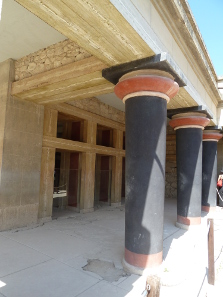by Björn Schöpe
translated by Annika Backe
August 20, 2015 – Once again, we hear of a mishap in a Turkish museum. This time, precious ancient mosaics held in the Museum of Antakya, ancient Antioch on the Orontes River, are said to have been severely damaged during restoration. In December 2014, a newly constructed museum building was inaugurated that is intended to become the adequate new location for one of the world’s largest collections of ancient mosaics. To that end, some of the exhibits have been restored by a company that has years of experience in the field. What exactly happened next is the subject of an investigation ordered by the Turkish Ministry of Culture.
In March 2015, the Turkish press reported on the restorations’ outcome: as regards at least ten mosaics dating to the 2nd until the 6th century AD, experts speak about severe damages and erroneous practices. The before-and after-pictures reveal some striking differences – albeit not for the better. Completely deviating colors, altered contours and shades have prompted comments like “caricatures of themselves”.
The Antakya Museum has closed the new premises for the time being, while the restored mosaics are being examined by experts. The company that performed the restoration work rejects all accusations. It rather claims to have restored the mosaics’ proper condition. The general impression had been distorted since, in the 1930s, French restorers had added colored stones into the mosaics and had varnished the surface. Today, those practices were being outlawed. According to a staff member of the company, Turkish media had additionally manipulated the photographs.
The English site for the protection of cultural property, The Committee for Cultural Policy, set this incident in the wider context of Turkish cultural policy. This policy is characterized by rigorous austerity measures and museum scandals. The opposition Nationalist Movement Party (MHP) indeed blames the ruling party AKP for her inapt bureaucracy and the resulting “massacre of history”. In the present case, however, the question is whether or not it really was a financial problem or rather a basic problem of restoration. The company at any rate claims to have done a proper job.
Admittedly, restorations are important but the measures to undertake must be known in advance to all parties involved. Those measures have to be reversible, and it must be understood that every restoration is an alteration and thus a potential danger to the historical object. Practices of the past can become obsolete and outlawed, as evidenced by the reference to the restorations of the French team undertaken 80 years ago.
Restored façade of the Palace of Knossos. Photograph: Deror avi / http://creativecommons.org/licenses/by-sa/3.0
The notorious restoration work that Sir Arthur Evans carried out at the Palace of Knossos on the island of Crete springs to mind. From a present-day-perspective, those restorations seem more like eccentric replicas put on the original site yet with no chance of being ever removed.
Almost all reports on the Antakya mosaics compare the restoration to an incident in Spain where a 19th century-fresco depicting Jesus Christ has been ‘restored’ so amateurishly that it now appears like a work of modern art – and, as a laughing stock, became a crowd puller.
Yet the reports do not mention the fact that there is a crucial difference: in Spain, it was an elderly woman who took matters in her own hand and attempted to restore the picture, in a DIY mentality, yet lacking both permission and competence. In Turkey, on the other hand, it is about a restoration undertaken by experts. If restorers and museum officials disagree over the terms ‘restoration’ and ‘damage’, then the exhibits continue to be in danger.
This is the report of Der Tagesspiegel.
An extensive article and many photographs were likewise published in The Guardian.
You find the article of the Committee for Cultural Policy here.
Look at images of the Jesus fresco in Borja, Spain, published in this article.
For reading the account of a journey to the Archaeological Museum in Antakya please click here.





